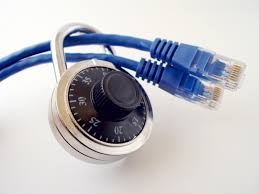A network is comprised of two or more computers that are connected in order to share its resources, exchange files and even allow computers to communicate. These resources that are shared include printers and others. On the other hand, security refers to freedom from risk or danger. In effect, network security refers to the protection of computer networks from different threats and risks.
There are significant reasons as to the need for network safety or protection arises. Problems over a network arise for the following reasons:
- Networks are shared resources that allow many applications to be used by the different users that are connected. Each user on the network has different interests and does what they want to do on the network on their end.
- There are organizations, antagonistic governments and criminals competing against one another that use the Internet. As such, there will always be the creation viruses, worms, Trojans and other threats such as backdoors etc, to control and administer what other computers on the network do.
- There are times when different computers are communicating over a network or applications, files etc are being distributed. Without security implications, all these can be compromised by malicious individuals whether for a competitive advancement or simply because they like committing cybercrime.
There are different types of network security. These security measures are used to ensure that the computer network is well protected and free from threats. They include:
- Physical Protection
Network security provides protection against fire, unauthorized access, natural disasters etc. To protect the network on a physical level, access to routers, switches, firewalls, etc should be restricted. These can be done by using locks that are of high quality and secondary verification methods. Biometrics can be used. These without a doubt are effective since the individual would not be able to access the premises if the initial scanned biometrics does not correspond. Security guards, video monitoring etc can be used to monitor the premises. Passwords and usernames can be used to restrict unauthorized users and access. Detectors such as smoke, fire etc can be used to detect the elements that can cause damages.
- Perimeter Protection
This type of protection is needed to separate your devices from those that are located on the other side of the network. Firewalls are very effective in this regards. These block certain data, at times malicious or infected, from entering and even leaving your network
Network security issues in today’s society are so prevalent and widespread. These threats can be transmitted in simple ways, from downloading from a website to your computer to extending a copy of the file to your friend. Threats to networks are well known by computer users however, they might not necessarily understand that these are actual threats to computer networks. Common threats that computer users can relate to is what is called a virus attack. Some computer users tend to use viruses, worms and Trojan horses interchangeably. However, these three malicious threats play different parts and are different in their attacks.
- Virus
These are computer programs that were created with the aim and intention to replicate or make copies to infect computers when a particular task is done or act is triggered.
- Worms
Like viruses, worms duplicate themselves but they do not alter or modify files that are located on the network.
- Trojan Horse
These programs normally appear to be something they are not. They tend to mimic things that computer users would deem to be legit but really they are malicious. A typical example of a type of Trojan horse is a game program that is not really a game.
Other threats to network security include data intercepting and vandals. Data interception involves the listening in or eavesdropping on transmissions by altering packets when they are being sent over the network. Vandals are applications that are destructible. Social engineering is also a threat that is common to a network. This includes acquiring information pertaining to the security of a network through nontechnical terms. An example of this is pretending to be technical support in order to capture valuable information from people. Also common is TCP hijacking. This is a dangerous method that is used by malicious individuals to gain access to Internet servers. In addition, networks are also opened to attacks such as a DOS (denial of service). This is one of the nastiest attacks and one of the hardest to resolve. A denial of service attack is easy to launch but difficult to track. It actually restricts or denies those users authorization that is actually authorized to use the network.
There are actions that can be taken to protect the perimeter of a network. Common protection methods that can be employed over a network to ensure networking security includes installing antivirus packages and software, usage of features on switches and routers such as their hardware and software capabilities that supports perimeter protection, intrusion detectors, security management and even identity access.
Networks should always have a firewall in place. Some networks provide access control for data encryption. Encryption can be used to make message appear unreadable to those who are sniffing. This message can only be read by the authorized person.
Among these suggestions that can protect you on a network, you can unplug your Ethernet cable when you are not using the Internet. These approaches to protecting a network should not be undertaken on a single or one on one basis. They all should be implemented to ensure that a fully protected network computer security is in place.
